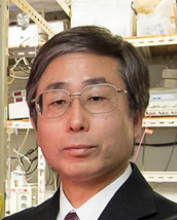CBE & MSE Seminar: Photocatalytic and Photoelectrochemical Water Splitting and CO2 Reduction as Artificial Photosynthesis

Professor
Department of Applied Chemistry, Faculty of Science
Tokyo University of Science, Japan
Abstract: Photocatalytic water splitting into H2 and O2 has a long research history, yet detailed understandings of the performance of various materials and reaction mechanisms are poorly understood. This continues to motivate research in the field, and has spawned recent interest in photocatalytic CO2 fixation. These water splitting and CO2 fixation reactions are regarded as artificial photosynthesis, because light energy is converted to chemical energy via thermodynamically unfavorable reactions. In my seminar, I will introduce the basics of photocatalysis as well as my team’s achievements using various metal oxide and metal sulfide materials for photocatalytic and photoelectrochemical water splitting and CO2 reduction.[1]
Visible-light responsive photocatalysts for water splitting. Rh- and Sb-codoped SrTiO3 photocatalysts loaded with IrO2 cocatalysts are active for solar water splitting into H2 and O2 under visible light irradiation at wavelengths < 500 nm.[2] Tandem devices consisting of Rh-doped SrTiO3 as the H2-evolving photocatalyst and BiVO4 as the O2-evolving photocatalyst material are also successful when arranged in Z-scheme designs using Fe3+/Fe2+, [Co(bpy)3]3+/2+, or [Co(phen)3]3+/2+ as a water-soluble redox mediator, conductive reduced graphene oxide (RGO) as a solid electron mediator, and even via direct solid-state contact without a mediator. We have also shown that a sheet of direct-contact photocatalysts consisting of Rh- and La-codoped SrTiO3 and BiVO4 powders with an Au contacting layer shows quite high > 1% solar water splitting activity.[3] Metal sulfide photocatalysts that are normally unstable for water splitting can be employed in Z-scheme photocatalyst systems. By combining metal sulfide materials as the H2-evolving photocatalyst with TiO2 (RGO/TiO2)[4] and BiVO4+Co complex as the O2-evolving photocatalyst, we demonstrated stable water splitting.[5]
Powdered photocatalysts for CO2 reduction using water as an electron donor. Ag/BaLa4Ti4O15 and Ag/NaTaO3:M (M=Ca, Sr, Ba, and La) photocatalysts with wide bandgaps show activities for CO2 reduction to form CO and HCOOH in an aqueous medium without any sacrificial reagents.[6,7] O2 was shown to evolve in a 1:2 stoichiometric amount with product indicating that water reacted as an electron donor and indicated that an uphill reaction of CO2 reduction accompanied with water oxidation was achieved. CuGaS2-RGO/BiVO4 in a Z-scheme photocatalyst system was also shown to be active for water splitting and CO2 reduction to CO under visible light irradiation without any sacrificial reagents.[8]
References: [1] Kudo, A. et. al, Chem. Soc. Rev. 2009, 38, 253. [2] Asai, R. et. al, Chem. Commun. 2014, 50, 2543. [3] Wang, Q. et. al, Nature Mater. 2016, 15, 611. [4] Iwashina, K. et. al, J. Am. Chem. Soc. 2015, 137, 604. [5] Kato, T. et. al, J. Phys. Chem. Lett. 2015, 6, 1042. [6] Iizuka, K. et. al, J. Am. Chem. Soc. 2011, 133, 20863. [7] Nakanishi, H. et. al, ChemSusChem. 2017, 10, 112. [8] Iwase, A. et. al, J. Am. Chem. Soc. 2016, 138, 10260.
Bio: Akihiko Kudo received his early education at Tokyo University of Science obtaining a bachelor's degree in 1983 and his doctorate in 1988 from Tokyo Institute of Technology. After one and half years as a postdoctoral fellow at the University of Texas in Austin, he became a research associate at the Tokyo Institute of Technology until 1995. He then joined the Tokyo University of Science as a Lecturer before he became associate professor in 1998 and a full professor in 2003. Kudo received an award from the Japanese Photochemical Association in 2009, the 10th Green and Sustainable Chemistry Award from the Ministry of Environment in 2011 and Catalysis Society of Japan Award (academic field) in 2017, and an Award for Academic Achievements in Ceramic Science and Technology in 2017. His current research interest focuses on photocatalyst materials for water splitting and CO2 fixation of artificial photosynthesis.
Host: Assistant Professor Shane Ardo
Share
Upcoming Events
-
EECS Seminar: Less Compute, More Intelligence – Efficient and Autonomous Generative AI and Agents
-
MAE 298: Microscopic Robots that Sense, Act and Compute
-
CBE 298 Seminar: Interface Modification for Electrocatalysis
-
CEE Ph.D. Defense Announcement: Machine Learning and Remote Sensing for Environmental Modeling - From Large-Scale Streamflow Forecasting to Malaria Risk Mapping
-
CBE Special Seminar: Operando Electrochemical Methods at Dynamic Energy Materials Interfaces
